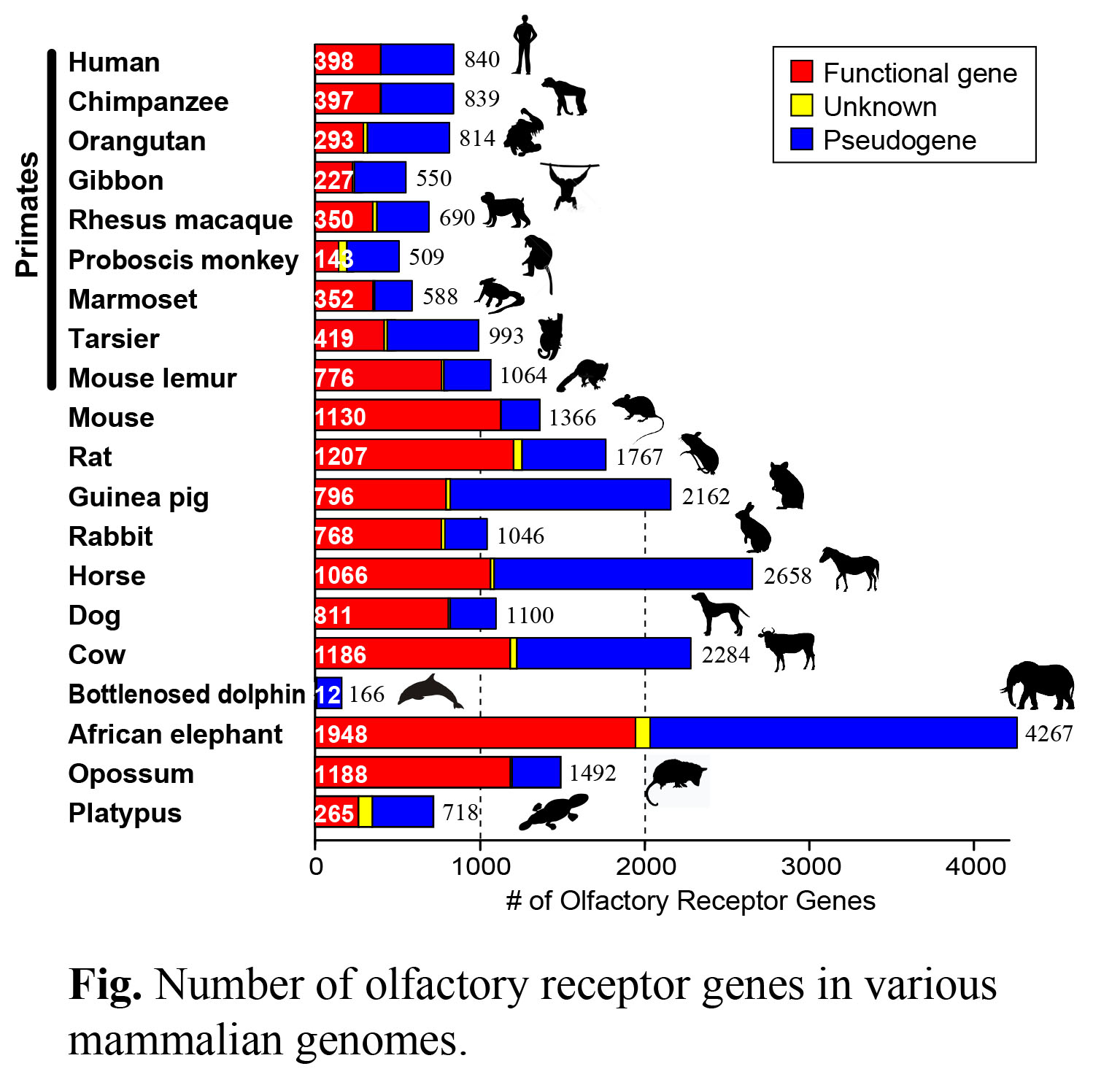1. Analysis of receptor genes for olfaction, pheromones, and tastes
 Olfaction is essential for the survival of most animals and is used to find foods, escape from predators, and identify mates and offspring. The initial step of olfaction is that odorants in the environment bind to "smell sensors", the olfaction receptors, in the nasal cavity. There are numerous olfactory receptor genes in the genome according to the presence of a variety of odors. The number of olfactory receptor genes is ~400 for humans and as many as ~2,000 for African elephants (Fig.).
Olfaction is essential for the survival of most animals and is used to find foods, escape from predators, and identify mates and offspring. The initial step of olfaction is that odorants in the environment bind to "smell sensors", the olfaction receptors, in the nasal cavity. There are numerous olfactory receptor genes in the genome according to the presence of a variety of odors. The number of olfactory receptor genes is ~400 for humans and as many as ~2,000 for African elephants (Fig.).
Each organism has a repertoire of olfactory receptor genes adapted to each living environment. By examining the entire set of olfactory receptor genes in each species' genome, we can infer how each species recognize the outer world.
We perform similar analyses for birds, fishes, insects, and nematodes as well as mammals. In addition, we investigate pherome and taste (bitter) receptors as well.
Results obtained by analyzing chemosensory receptor genes can be broadly applied for developing new insecticides, adding new flavors to pet foods, etc.
2. Association studies for polymorphisms and environmental factors
Olfactory receptor genes are characterized by a large extent of genetic diversity. We investigate the relationships between the difference in perception of various odors and polymorphims in the olfactory receptor genes. We also perform association studies between polymorphims and various phenotypic differences.
3. Genome analyses for various organisms
We analyze genome sequences of various organisms such as Asian elephants, grasscutters, capuchin monkeys, and megabats in international collaboration with Indian Institute of Sciences, University of Ghana, and University of Calgary.
4. Application of molecular evolution to arguculture and veterinary sciences
Animal diseases can be interpreted as the interactoin between the genomes of hosts and pathogens. The genomes of domestic animals and plants should be analyzed on the basis of molecular evolution, because these genomes contain remnants of artifical selection by humans. We aim to develop novel methods to analyze genomic information by applying molecular evolution to argiculture and veterinary scicences.
Copyright 2021 Yoshihito Niimura All Rights Reserved.